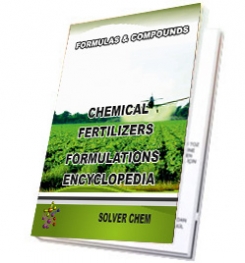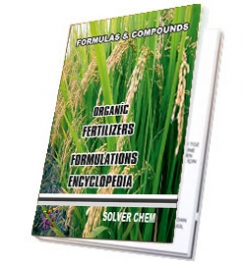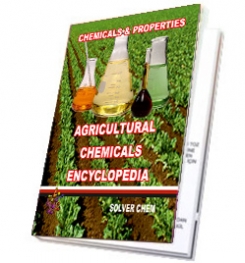Dewatering
After being anaerobically digested, the biosolids are conveyed to one of two centrifuges for dewatering. The centrifuges operate at 3200 RPM and use a liquid polymer to separate the solids and the liquids. Upon emerging from the centrifuge, the biosolids are 20% dry solid (DS) and ready for the heat drying and pelletization process.
Mixing
The biosolids continue to the mixer where they are mixed with recycled pellets to form consistency of 70% DS.
Drying
The mixture is then sent to the drying drum. The drying drum consists of three concentric cylinders which the pellets pass through consecutively. Heated, re-circulated air is blown into the drying drum from a furnace that burns both natural and methane gas. The inlet temperature of the drying drum is 850°-950° F and the outlet temperature is 210° F. After emerging from the drying process the pellets are 93% DS, nearly perfectly dry.

Air and Solids Separation
The pellets and the heated air pass through a pre-separator. The pre-separator has a baffle that slows the velocity of the air, causing the heaviest solids to drop out. The air and the lighter solids then pass through a poly cyclone, consisting of tunnels which use centrifugal motion to allow the rest of the solids to drop out. The pellets are then sorted and the air is transferred to air treatment and recirculation stage.
Pellet Sorting
The solids from the pre-separator and the poly cyclone are then sent to a vibrating screen. The vibrating screen consists of three tiers of screens that sort the solids into four sizes: product-sized pellets (0.5-2.5 mm), oversize pellets (2.5-10 mm), fines (<0.5 mm), and trash (>10mm). The oversized pellets are then crushed and combined with the fines before being sent to the recycle bin. These recycled pellets are used in the mixing stage. The product-sized pellets are sent to the pellet cooler.
Pellet Cooling and Storage
Pellets that are the proper size are cooled to 90° F in the pellet cooler and sent to one of three storage silos using a pneumatic conveyor. Trucks can be loaded directly from the silos and weighed. The storage silos each have 10,000 cubic feet of storage capacity and together can hold 4 weeks of manufactured pellets at current production rates.
Air Treatment and Recirculation
The air is sent back to the furnace and re-circulated through the system. Air that needs to be treated is scrubbed with water and chemicals to eliminate odors and then released to the atmosphere. Volatile Organic Compounds (VOCs) are a main source of air pollution. The Regenerative Thermal Oxidizer (RTO) efficiently destroys the VOCs prior to discharge of the treated air to the atmosphere.
The Final Product - SoundGRO
any liquid and solid fertilizer,
CHEMICAL
FERTILIZERS
FORMULATIONS
ENCYCLOPEDİA
is enough.
This encyclopedia has many formulas about NPK fertilizers,NP fertilizers,liquid poliar fertilizers, powder fertilizers, granulas fertilizers, calcium and potasium fertilizers, special fertilizers, dripping fertilizers,foliar fertilizers, edta chelated fertilizers, micronutrients fertilizers,macronutrients fertilizers,chelated fertilizers etc.
All chemical fertilizers in the encyclopedia are producible easily.You need no help and no technıcal support. The encyclopedia is enough to produce chemical fertilizers itself.
CHEMICAL
FERTILIZERS
FORMULATIONS
ENCYCLOPEDIA
is written clear and understandable.
RELATED TAGS: What is powder fertilizer,what is complete fertilizer,what is incomplete fertilizer,what is balanced fertilizers,making complete fertilizer,formulation of balanced fertilizer,what is double fertilization, importance of fertilization in plants, making phosphorus fertilizers, how to make liquid phosphoric acid fertilizers, making phosphate fertilizer, properties of solid fertilizers, effects of dripping fertilizers, benefits of granular fertilizer, advantages of foliar liquid fertilizers, formulations of liquid drip fertilizer,compounds of phosphorus fertilizers, powder powder nitrogen fertilizers making, properties of solid liquid balanced fertilizer, complex fertilizer composition,using liquid micronutrients fertilizers, solid microelement fertilizers,using micronutrient fertilizers,plants to calcium fertilizers, micronutrients fertilizers in agricultural, how to make microelement fertilizers,making powder micronutrient fertilizers,micro elements fertilizers,properties of edta chelated fertilizers, liquid foliar fertilizers, to make ammonium nitrate fertilizers, preparation of liquid phosphate fertilizers, production of copper fertilizers, NPK fertilizer production,productions, types of chemical fertilizers,fertilizer types, solid foliar fertilizers,micronutrient fertilizers, combi fertilizers, manufacturing fertilizers,how to use chemical fertilizers, foliar fertilizers, drip fertilizers, NPK fertilizers, balance fertilizers, to make balance fertilizers,powder fertilizers manufacturing,granules fertilizer making,compositions of fertilizers, formulations of fertilizers, how to programme of fertilizers, using fertilizers.
After being anaerobically digested, the biosolids are conveyed to one of two centrifuges for dewatering. The centrifuges operate at 3200 RPM and use a liquid polymer to separate the solids and the liquids. Upon emerging from the centrifuge, the biosolids are 20% dry solid (DS) and ready for the heat drying and pelletization process.
Mixing
The biosolids continue to the mixer where they are mixed with recycled pellets to form consistency of 70% DS.
Drying
The mixture is then sent to the drying drum. The drying drum consists of three concentric cylinders which the pellets pass through consecutively. Heated, re-circulated air is blown into the drying drum from a furnace that burns both natural and methane gas. The inlet temperature of the drying drum is 850°-950° F and the outlet temperature is 210° F. After emerging from the drying process the pellets are 93% DS, nearly perfectly dry.

Air and Solids Separation
The pellets and the heated air pass through a pre-separator. The pre-separator has a baffle that slows the velocity of the air, causing the heaviest solids to drop out. The air and the lighter solids then pass through a poly cyclone, consisting of tunnels which use centrifugal motion to allow the rest of the solids to drop out. The pellets are then sorted and the air is transferred to air treatment and recirculation stage.
Pellet Sorting
The solids from the pre-separator and the poly cyclone are then sent to a vibrating screen. The vibrating screen consists of three tiers of screens that sort the solids into four sizes: product-sized pellets (0.5-2.5 mm), oversize pellets (2.5-10 mm), fines (<0.5 mm), and trash (>10mm). The oversized pellets are then crushed and combined with the fines before being sent to the recycle bin. These recycled pellets are used in the mixing stage. The product-sized pellets are sent to the pellet cooler.
Pellet Cooling and Storage
Pellets that are the proper size are cooled to 90° F in the pellet cooler and sent to one of three storage silos using a pneumatic conveyor. Trucks can be loaded directly from the silos and weighed. The storage silos each have 10,000 cubic feet of storage capacity and together can hold 4 weeks of manufactured pellets at current production rates.
Air Treatment and Recirculation
The air is sent back to the furnace and re-circulated through the system. Air that needs to be treated is scrubbed with water and chemicals to eliminate odors and then released to the atmosphere. Volatile Organic Compounds (VOCs) are a main source of air pollution. The Regenerative Thermal Oxidizer (RTO) efficiently destroys the VOCs prior to discharge of the treated air to the atmosphere.
The Final Product - SoundGRO
- Meets EPA standard for Class A 'Exceptional Quality' biosolid
- 93% Dry Solid
- 0.5-2.5 mm diameter pellet
- N-P-K (Nitrogen-Phosphate-Potassium) ratio of 5-5-0
- A quality fertilizer that improves landscaping and gardens
- Registered with the Department of Agriculture as a commercial fertilizer
FERTILIZERS AND PRODUCTIONS
LIQUID OR SOLID FERTILIZER PRODUCTION is not very complicated. For the production, there is need usable and tried a formulation, raw materials and mixing tank. For raw materials to be used, quantities to be used and ingredients usage rankings, you should look into this formulation. Therefore, formulation and productıon methods of FERTILIZERS are important. If you have not a good formulation, you cannot make healthy and efficient production of any fertilizer.
If you need any manufacturing formulations and production methods about
any liquid and solid fertilizer,
CHEMICAL
FERTILIZERS
FORMULATIONS
ENCYCLOPEDİA
is enough.
This encyclopedia has many formulas about NPK fertilizers,NP fertilizers,liquid poliar fertilizers, powder fertilizers, granulas fertilizers, calcium and potasium fertilizers, special fertilizers, dripping fertilizers,foliar fertilizers, edta chelated fertilizers, micronutrients fertilizers,macronutrients fertilizers,chelated fertilizers etc.
All chemical fertilizers in the encyclopedia are producible easily.You need no help and no technıcal support. The encyclopedia is enough to produce chemical fertilizers itself.
CHEMICAL
FERTILIZERS
FORMULATIONS
ENCYCLOPEDIA
is written clear and understandable.
RELATED TAGS: What is powder fertilizer,what is complete fertilizer,what is incomplete fertilizer,what is balanced fertilizers,making complete fertilizer,formulation of balanced fertilizer,what is double fertilization, importance of fertilization in plants, making phosphorus fertilizers, how to make liquid phosphoric acid fertilizers, making phosphate fertilizer, properties of solid fertilizers, effects of dripping fertilizers, benefits of granular fertilizer, advantages of foliar liquid fertilizers, formulations of liquid drip fertilizer,compounds of phosphorus fertilizers, powder powder nitrogen fertilizers making, properties of solid liquid balanced fertilizer, complex fertilizer composition,using liquid micronutrients fertilizers, solid microelement fertilizers,using micronutrient fertilizers,plants to calcium fertilizers, micronutrients fertilizers in agricultural, how to make microelement fertilizers,making powder micronutrient fertilizers,micro elements fertilizers,properties of edta chelated fertilizers, liquid foliar fertilizers, to make ammonium nitrate fertilizers, preparation of liquid phosphate fertilizers, production of copper fertilizers, NPK fertilizer production,productions, types of chemical fertilizers,fertilizer types, solid foliar fertilizers,micronutrient fertilizers, combi fertilizers, manufacturing fertilizers,how to use chemical fertilizers, foliar fertilizers, drip fertilizers, NPK fertilizers, balance fertilizers, to make balance fertilizers,powder fertilizers manufacturing,granules fertilizer making,compositions of fertilizers, formulations of fertilizers, how to programme of fertilizers, using fertilizers.
AGRICULTURE ENCYCLOPEDIAS AND CONTENTS


E - BOOKS AND HARD BOOKS

HOW TO BUY
AGRICULTURE ENCYCLOPEDIAS AND VIDEOS


E - BOOKS AND HARD BOOKS

HOW TO BUY
AGRICULTURE ENCYCLOPEDIAS AND VIDEOS
|
|
|
|
|
|
|
|
|
